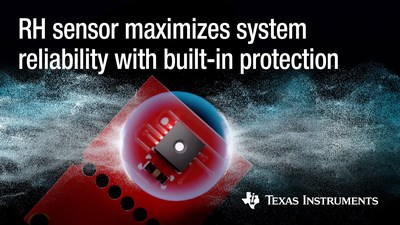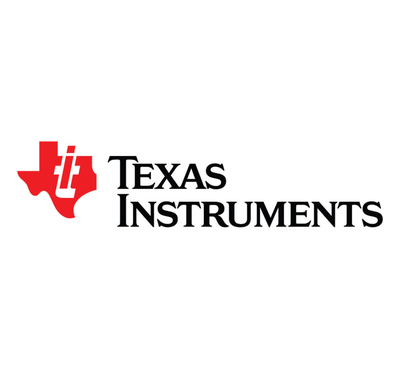New TI humidity sensors provide the highest reliability and built-in resistance to contaminants and harsh environments
Texas Instruments (TXN) launched the HDC3020 and HDC3020-Q1 humidity sensors, touted for their high reliability, accuracy, and low power consumption. These sensors feature integrated drift correction technology, achieving less than 0.21% RH accuracy drift per year. They maintain ±1.5% RH accuracy across a wide range of 1.62 V to 5.5 V. The devices support energy-efficient operations, crucial for battery-operated systems. Priced at $1.65 in 1,000-unit quantities, they are available exclusively on TI.com. These advancements aim to enhance industrial and automotive applications while addressing moisture issues.
- Launched HDC3020 and HDC3020-Q1 humidity sensors with high reliability and accuracy.
- Achieves less than 0.21% RH accuracy drift per year, enhancing long-term performance.
- Offers integrated drift correction technology for sustained accuracy over time.
- Provides ±1.5% RH accuracy across a wide voltage range of 1.62 V to 5.5 V.
- Ultra-low power consumption supports efficient operation for battery-powered devices.
- Affordably priced at $1.65 in 1,000-unit quantities, facilitating widespread adoption.
- None.
Insights
Analyzing...
DALLAS, June 28, 2021 /PRNewswire/ -- Texas Instruments (TI) (Nasdaq: TXN) today introduced the first devices in a new family of humidity sensors that provide the industry's highest reliability and accuracy and the lowest power consumption – along with built-in protection of sensing elements. The HDC3020 and HDC3020-Q1 will allow engineers to create more reliable industrial and automotive systems that withstand potential damage caused by moisture, and react as needed to changing water vapor conditions over time. For more information, see www.ti.com/hdc3020-pr and www.ti.com/hdc3020-q1-pr.
Moisture affects system performance and product longevity of applications in vehicles, appliances and medical equipment. From extending the life of produce during transport and storage, to keeping automotive cameras clear of fog, to controlling air quality and flow in buildings, the need for improved reliability and safer, more comfortable environments has increased the adoption of relative humidity (RH) sensors.
Offering improved relative humidity measurement accuracy with reduced long-term error, when compared to existing RH sensors, the HDC3020 and HDC3020-Q1 preserve data integrity under stress conditions and are the industry's first to provide integrated correction to adapt to drift caused by natural aging, environmental stress or interactions with contaminants. To learn more about the impact of long-term drift and accuracy, read the technical article, "Why long-term consistent performance matters for relative humidity sensors."
Extend system reliability with enhanced sensing elements
The HDC3020 and HDC3020-Q1 achieve lower drift in extreme conditions than competing devices, with less than
When exposed to stress or contaminants, the sensors also provide a second line of defense, where even a small accuracy drift from the sensor's time-zero specification can be removed using integrated drift correction technology. Low drift is especially important in long-life applications, because it enables better performance and greater reliability over time.
Increase system efficiency with the industry's highest accuracy
The HDC3020 and HDC3020-Q1 provide the highest accuracy – verified with a procedure traceable to the National Institute of Standards and Technology – across the full supply voltage of 1.62 V to 5.5 V and the widest temperature and humidity range at ±
Additionally, the HDC3020 and HDC3020-Q1 are available in several pin-to-pin compatible package cover options, such as removable polyimide tape and permanent IP67-rated filter covers. The covers provide ingress protection against dust and moisture for the devices during assembly and system lifetimes, and help maintain accuracy when the sensor is exposed to contaminants.
Increase lifetimes for battery-operated systems with the industry's lowest-power humidity sensors
Ultra-low power consumption (nanoampere) across a wide supply range from 1.62 V to 5.5 V enables low-power operation both while a system is actively running and in sleep mode. An automatic measurement mode enables humidity sensing at regular intervals to capture data while the rest of the system sleeps, further preserving system battery life in applications such as cold-chain data loggers; wirelessly connected environmental sensors such as air-quality monitors, smart home or wireless sensor nodes in buildings; or IP network cameras.
Package, availability and pricing
Preproduction versions of the HDC3020 and HDC3020-Q1 are available exclusively on TI.com in 8-pin leadless plastic small-outline packages. Pricing starts at US
About Texas Instruments
Texas Instruments Incorporated (Nasdaq: TXN) is a global semiconductor company that designs, manufactures, tests and sells analog and embedded processing chips for markets such as industrial, automotive, personal electronics, communications equipment and enterprise systems. Our passion to create a better world by making electronics more affordable through semiconductors is alive today, as each generation of innovation builds upon the last to make our technology smaller, more efficient, more reliable and more affordable – making it possible for semiconductors to go into electronics everywhere. We think of this as Engineering Progress. It's what we do and have been doing for decades. Learn more at TI.com.
Trademarks
All registered trademarks and other trademarks belong to their respective owners.
![]() View original content to download multimedia:http://www.prnewswire.com/news-releases/new-ti-humidity-sensors-provide-the-highest-reliability-and-built-in-resistance-to-contaminants-and-harsh-environments-301320302.html
View original content to download multimedia:http://www.prnewswire.com/news-releases/new-ti-humidity-sensors-provide-the-highest-reliability-and-built-in-resistance-to-contaminants-and-harsh-environments-301320302.html
SOURCE Texas Instruments









